When a machine is invented, metaphors follow. For instance, Jerónimo de Ayanz y Beaumont (1553 – 1613) invented a steam-powered water pump for draining mines. It was patented in 1606. One day it occurred to William Harvey that the heart is a pump, he published his findings in 1628. These dates from Wikipedia support what I’m saying – I’m going to trust Wikipedia on this one. I like machines and metaphors.
The image at the top is Jean Tinguely’s Homage to New York, 1960. It was a machine designed to destroy itself. Intentional futility is poignant, and if the futility suggests something about ourselves, I’d call it art.
What follows are some quotes from artists who emerged in the early 20th century:
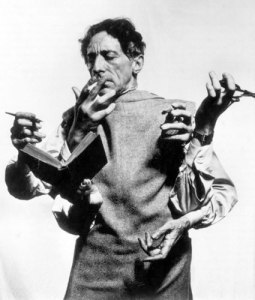
Jean Cocteau, “The case of the gramophone convinces me that poetry is moving into an unknown world. The subordinate role of machines is going to end. We shall have to collaborate with them”.fn1
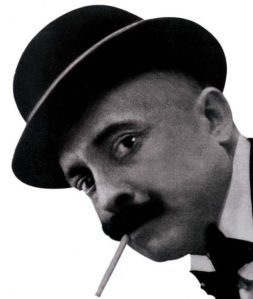
Filippo Tommaso Marinetti, “We are developing and proclaiming a great new idea that runs through modern life: the idea of mechanical beauty. We therefore exalt love for the machine, that love we notice flaming on the cheeks of mechanics scorched and smeared with coal. Have you never seen a mechanic lovingly at work on the great powerful body of his locomotive?”.fn2
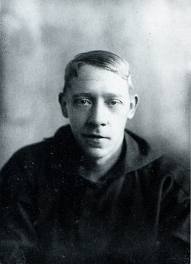
Vladimir Evgrafovich Tatlin, “I am waiting for well-equipped artistic ‘depots’ where an artist’s psychic machine might be repaired as necessary”.fn3
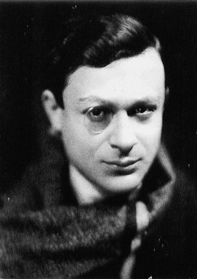
Tristan Tzara, “Dialectics is an amusing machine that leads us (in banal fashion) to the opinions which we would have held in any case”.fn4
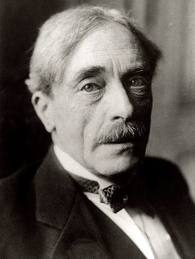
Paul Valery, “A poem is really a kind of machine for producing the poetic state of mind by means of words”.fn5
In the last couple of years, two other art machines have come to my attention. Both have Tinguely’s poignant futility.

The Belgian artist Wim Delvoye has made a number of machines that manufacture feces – put food in the top and wait. His Disney themed website is also worth a look. http://www.wimdelvoye.be/
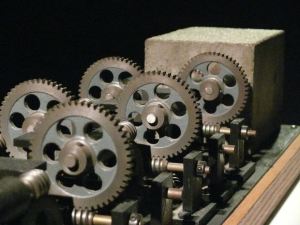
Arthur Ganson made a machine that consists of interconnected gears driven by an electric motor at 200 rpm with each of its twelve stages reducing speed and increasing torque by a factor of 50. The final gear in the series is encased in concrete and will take two trillion years to make one rotation.
The futility of all these examples is pretty obvious and I see them as metaphors of our hopes and bodily realities.
But enough about machines. there’s also a beautiful futility in the following two works:

In 1982 Agnes Denes planted a field of wheat in the Battery Park landfill, New York.
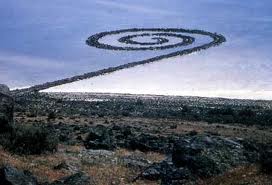
In 1970 Robert Smithson constructed Spiral Jetty on the shore of Great Salt Lake, near Rozel Point, Utah. It’s 1500 feet long and 15 feet wide.
Oh what strange and wondrous things there are.
fn1 Jean Cocteau, The Art of Cinema, André Bernard and Claude Gauteur eds., Robin Buss trans., New York: Marion Boyars, 1992, “A Wonderful and Dangerous Weapon in a Poet’s Hands”, p. 31.
fn2 Filippo Tommaso Marinetti, Marinetti Selected Writings, R. W. Flint ed., R. W. Flint and A. A. Coppotelli trans., New York: Farrar, Straus and Giroux, 1972, “War, the World’s only Hygiene” (1911-1915), p. 90.
fn3 Vladimir Evgrafovich Tatlin, Tatlin, Larissa Alekseevna Zhadova ed., P. Filotas, M. Julian, E. Lockwood, D. Macknight, E Polgar, C. Wright trans., London: Thames and Hudson, 1988, “My answer to “Letter to the Futurists”” p. 185.
fn4 Tristan Tzara, Dada Almanach, Richard Huelsenbeck ed., M. Green, D. Wynand, T. Hale, B. Wright, A. Melville and S. Barnett trans., London: Atlas Press, 1993, “Dada Manifesto, 1918” p.127.
fn5 Paul Valery, The Art of Poetry, Denise Folliot trans., London: Routledge and Kegan Paul, 1958, “Poetry and Abstract Thought” p. 79
PHOTO CREDITS: Cloaca from http://www.wimdelvoye.be/ ; Arthur Ganson’s machine from http://www.arthurganson.com/ ; Wheat field photo, Agnes Denes ; The photo of Cocteau looks like a Man Ray kind of thing. I wish I knew who to credit for the others. It’s easier to find things on the internet than it is to find out who created them when. If anyone has advice on this subject, it would be greatly appreciated. I’m a stickler for footnotes.

